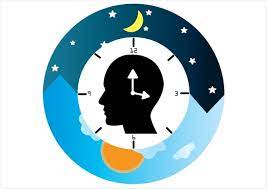 Regulated by the suprachiasmatic nucleus in the hypothalamus.
Regulated by the suprachiasmatic nucleus in the hypothalamus.
Is observed in body temperature, heart rate, secretion of several hormones, red blood cell production and other physiological characteristics.
The intrinsic clock determines sleep-wake cycles, cognitive functions such as learning and memory, daily variations in blood pressure, heart rate, hormone levels, respiratory and exercise capacity, and coagulation.
The intrinsic circadian clock is slightly longer than 24 hours, which is different than the 24 hour solar day and the circadian clock resets to compensate for the difference.
Light is the most important time cue for synchronizing circadian rhythms.
Exposure to light in the evening shifts the clock to a later time, while exposure to light in the morning shifts the clock to an earlier time (Khalsa SB).
During the night there is a crossover point separating evening responses to light exposure from morning responses.
Sleep limits the exposure to light and plays an important role in the regulation of the circadian clock.
Sleep disturbances occur with disruption of circadian rhythm.
Alzheimer’s disease leads to pathological changes in the suprachiasmatic nucleus and disruption in circadian rhythms.
Asthma has an increased incidence of status asthmaticus during the early hours of the morning.
Morning stiffness characteristic of rheumatoid arthritis.
Osteoarthritis typically have worse symptoms in the afternoon.
Symptoms of allergic rhinitis typically more severe in the early morning hours.
